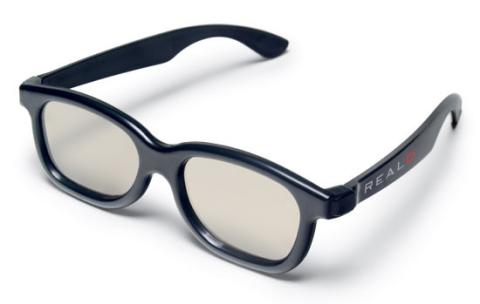Samsung Introduces FullHD 'RealD' Compatible Televisions
 Tuesday, January 4, 2011 at 7:53AM
Tuesday, January 4, 2011 at 7:53AM  In advance of the opening of CES 2011, Samsung and RealD jointly announced Samsung's intention to build new 3-D televisions that display 3-D content using the same glasses widely available in movie theatres around the world.
In advance of the opening of CES 2011, Samsung and RealD jointly announced Samsung's intention to build new 3-D televisions that display 3-D content using the same glasses widely available in movie theatres around the world.
Currently, 3-D televisions use one of two different types of display technology:
- Active shutter technology, which uses small LCD panels built into the glasses that are then synchronized with the television to deliver the appropriate content to the left or right eye by blocking the eye that doesn't need to "see" at that moment in time. The issues with this technology are that the glasses are expensive, require charging, and there's typically visible flicker and cross-talk (information intended for the left eye going to the right and vice-versa, causing ghosting and other visual aberrations).
- Passive technology, similar to RealD, using a "patterned retarder" technology. This basically means that the LCD panel has an extra layer that allows every other line on the display to go to each eye (e.g. line 1 goes to the left eye, line 2 to the right, and so on). This is the technology used in Vizio and LG's new 3-D displays, with Vizio's 65" passive 3-D display currently on sale at Costco and Sam's Club. The issue with this technology is that it cuts the resolution of 3-D movies in half, since each eye can only receive a maximum of 540 lines of information. There may also be issues with 2-D content being impacted, as there is effectively a permanent filter in front of each line of the panel (although, to be fair, this could be compensated for within the television's firmware).
The new technology being developed by Samsung and RealD emulates the method used for 3-D technology in movie theaters. Their technique places an active shutter in front of the LCD panel, that can block the image from either the left or right eye as needed when the viewer is wearing passive glasses that are the same as those used in theaters. When 2-D content is being viewed, the active panel is simply left "off" and no image degradation occurs.
It remains to be seen whether flicker will be a problem with this method, but as long as the refresh rate is sufficiently high enough, the method should work very well. Televisions using this technology will undoubtedly be expensive in their early days, but as the technology matures, the premium for the additional LCD panel will drop, and the cost differential should be minimized.
If 3-D technology is genuinely going to take off at home, this type of solution is exactly what's required. Technology that allows every viewer to inexpensively enjoy the same, high quality, 3-D image and that doesn't impact 2-D performance. I also expect RealD will be licensing their technology to other hardware manufacturers in the very short term (if they haven't already).
 3-D,
3-D,  CES 2011,
CES 2011,  Home Theater,
Home Theater,  LG,
LG,  RealD,
RealD,  Samsung,
Samsung,  Vizio in
Vizio in  News,
News,  Television
Television 

Reader Comments